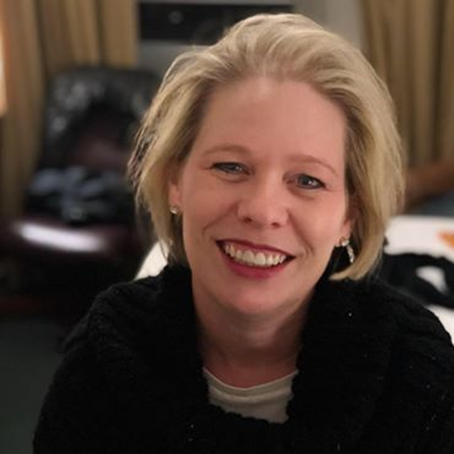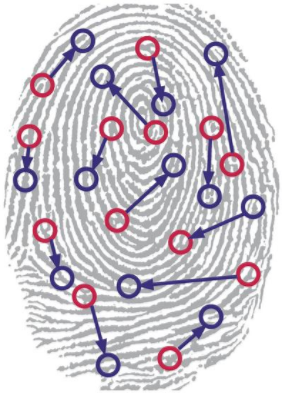As I’ve done the past three years, I reached out to several attendees of Legaltech New York (LTNY) 2019 (some of whom I met with during the show) to get their thoughts and impressions of this year’s show. We had so many people respond that I decided to split their feedback into two posts. Yesterday was the first half, here are the remaining observations. And, no, I didn’t split this into two posts just so I could save myself another day of writing, my observations are at the bottom of this post. ;o)
As always, these should be taken as their personal opinions and observations regarding the show, not those of their employer or clients (even when they’re talking about the cost of breakfast at the Hilton). Here are additional observations from attendees of the show:
“My observation was that most companies are working on the same goal(s) that they were last year. It appears that most companies are still working towards an integrated platform, from collection to production. Some companies have made strides to making a more cohesive product while others have acquired the tools/products/companies to start their journey. I didn’t hear as much about Relativity as I have in previous years though RelativityOne is still a product that most companies are ‘keeping an eye on’. Overall, it was another great Legal Tech and crazy that it was warmer in NYC that most of the country.”
— Eric Kelting, Co-Founder, Complete Legal
“1. I felt like the event overall was extremely smaller than it’s ever been.
- I also think that the vendors are getting more creative out of necessity to drum up more engagements.
- They had good speakers but it’s time for a new chapter in our space. I think they should look at how to bridge a few gaps.
- 2019 is about Masters resolving these issues. We want to make sure the industry is getting what they need. New masters, new and exciting content and more.
- IBM is way over played these days. They have had the same keynote for two years. He came across as also tired of his own presentation.
All in all, we are in a unique time with legal and technology. Innovations are happening everyday while tried and true solutions are getting better. You have companies acquired which paves the way for new innovation and development. It will be one of the most interesting two years is my prediction.”
— Robert Childress, Founder of The Masters Conference
“This year’s Legalweek was a pleasant surprise after all of the changes and lack of enthusiasm we saw at last year’s show. My top observation is that I had numerous conversations around diversity and inclusivity that may have been spurred by The DAT File podcast Cat Casey and I did with Brandon Law the week before the conference and then fueled by the open letter from 170 general counsel that was posted at beginning of week. Overall, it was an excellent week that helped me reconnect with my network and meet new people with interesting perspectives on the growth of our industry. Additional observations are that more people asked me about personal branding, and I saw more corporations were in attendance bringing small teams to participate in sessions and learn more about eDiscovery.”
— Maribel Rivera, Marketing Consultant
“The highlight for me was that I paid $48 for oatmeal at the Hilton. I seem to have this problem at all Hilton hotels. You sit down for the buffet breakfast and they don’t tell you that it’s $48 whether you east a single raisin or five servings of scrambled eggs. All I ate was a $3.00 bowl of oatmeal and the bill was still $50.”
— Mike Quartararo, Managing Director, eDPM Advisory Services
“This year really seemed to solidify a trend we’ve been seeing at Legalweek for the past couple years—the real conference that happens outside of the conference. While the expo floor will always be the best place to take in a bunch of new tech and bump into friends and connections, there seemed to be more events happening outside of the Hilton than ever before. These also extended well beyond happy hours and lunches to bespoke programming like session tracks, hands-on exercises, and amazing guest speakers.”
— Shawn Gaines, VP of Marketing for Relativity
“I did some asking around, checking in with friends and colleagues. Here is what emerged:
- Many felt a chill in the air, and we aren’t just talking polar vortex. As one person remarked, ‘Not allowing folks to walk around for free (or nearly free) kills the value of the event, from my point of view.’ As someone else noted, ‘It would be nice to see smaller admission packages with educational tracks still attached.’ On the positive side? The addition of cyber cafes and more seating near the sessions and conference floor.
- Acquisitions continue apace – OpenText’s acquisition of Catalyst being the most recent example – and private equity money keeps pouring in. While there are benefits here, people I talked with focused on the dangers, such as the stereotypical PE 3-year build-and-sell strategy that might ultimately hinder the industry more than help it.
- Four key areas highlighted at the conference were cloud (Seems to have more eDiscovery vendors host the data in cloud… Most are primarily US based vendors serving US markets.), analytics (‘Visual analytics and dashboard seems to be more prominent in every eDiscovery tool I’ve seen.’), mobile (‘Continued interest in mobile device developments. Specifically emojis.’), and ease of use (‘I’ve seen a few vendors where they made their review platform very click friendly, which looks very primitive to me, but seems to appeal to the general reviewers.’).”
— George Socha, Managing Director, BDO
And, here are my observations from the show:
For the first time since I’ve been writing the eDiscovery Daily blog, I didn’t ask for a press pass this year. I was simply too busy with customer and analyst meetings, coordinating our NineForum sessions at the booth and so forth. So, I didn’t attend any sessions and don’t have specific feedback on any sessions. I heard good things about some of the sessions and ALM certainly lined up some terrific speakers (as they always do), so I expect they were high quality.
As for what I did observe, the show definitely appears smaller and that was certainly reflected in the exhibit hall, which seemed to have considerably less exhibitors than in years past. I know part of that trend is consolidation in the industry, but I also know of several companies still around that used to exhibit, but don’t anymore. Why not? Clearly, they don’t feel they’re getting the ROI that makes it worthwhile to do so. Part of that could be attributable to ALM’s decision a few years ago to start charging for admission to the exhibit hall, part of that could be due to changing ways on how customers choose to learn about potential software and services options today. I would be very interested to see ALM just try one year to go back to the free access to the exhibit hall (yes, I know this will mean a lot of people who have no interest in buying anything, but it might also bring in some more people who are, but don’t want to pay to learn about software and services) to see if that reverses a trend to bring back some exhibitors. Certainly, it seems worth a try to reverse a trend toward shrinking attendance that threatens the very conference itself.
More and more, Legaltech has become about the meetings around the show itself and not the actual show (many of which are in suites at surrounding hotels). I would be interested to find out what percentage of people come to Legaltech that never attend a session or visit the exhibit hall. I’ll bet that percentage is growing…significantly. There’s a big difference between people who are at Legaltech and the people who are in Legaltech – that second group seems to be shrinking every year.
So, what do you think? Did you attend Legaltech last week? What did you think of this year’s show? Please share any comments you might have or if you’d like to know more about a particular topic.

Sponsor: This blog is sponsored by CloudNine, which is a data and legal discovery technology company with proven expertise in simplifying and automating the discovery of data for audits, investigations, and litigation. Used by legal and business customers worldwide including more than 50 of the top 250 Am Law firms and many of the world’s leading corporations, CloudNine’s eDiscovery automation software and services help customers gain insight and intelligence on electronic data.
Disclaimer: The views represented herein are exclusively the views of the author, and do not necessarily represent the views held by CloudNine. eDiscovery Daily is made available by CloudNine solely for educational purposes to provide general information about general eDiscovery principles and not to provide specific legal advice applicable to any particular circumstance. eDiscovery Daily should not be used as a substitute for competent legal advice from a lawyer you have retained and who has agreed to represent you.








